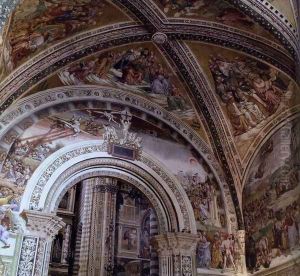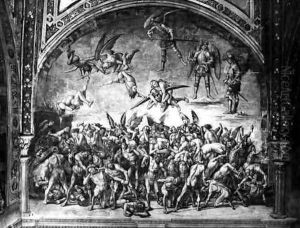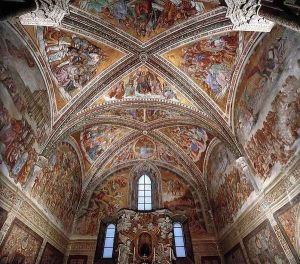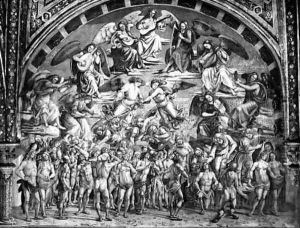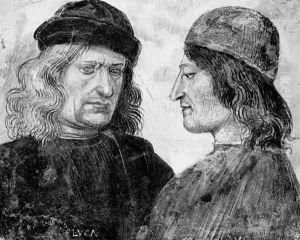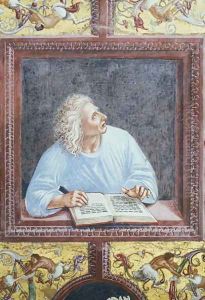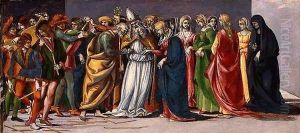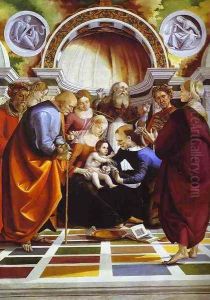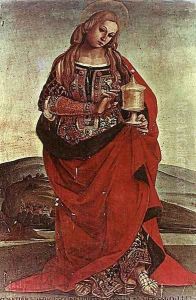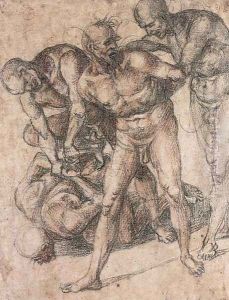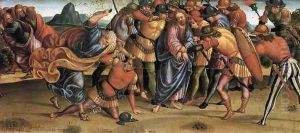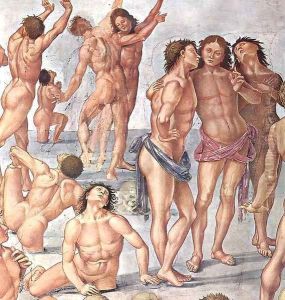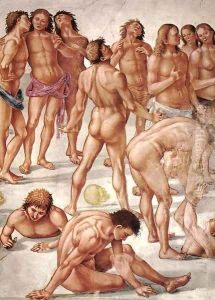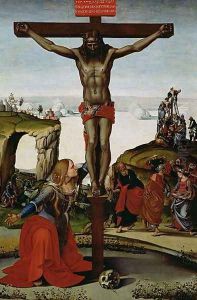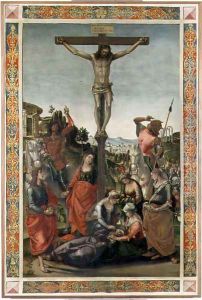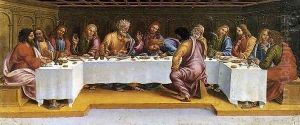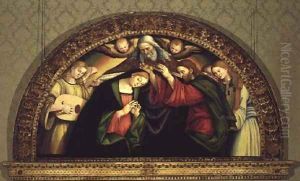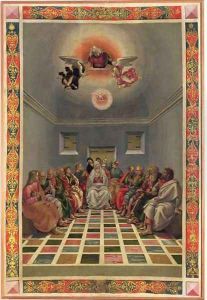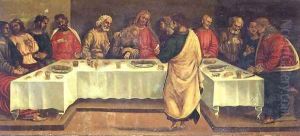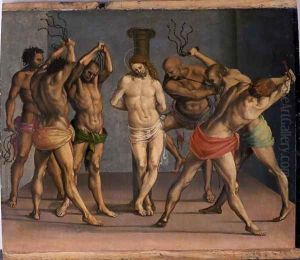Luca Signorelli Paintings
Luca Signorelli, born in 1445 in Cortona, Italy, was a prominent painter during the Italian Renaissance. His work is noted for its muscular figures, dramatic gestures, and detailed depictions of nude bodies. Signorelli was apprenticed to Piero della Francesca, and his early work shows the influence of his master, particularly in the use of perspective and a clear, bright palette.
During the 1480s, Signorelli began to develop his own style, which was characterized by more robust and complex compositions. One of his early significant works is the 'Testament and Death of Moses' fresco in the Sistine Chapel, which he completed after being commissioned by Pope Sixtus IV. This work displays his skill in handling large-scale compositions and his understanding of human anatomy.
Signorelli's most famous work is the 'Last Judgment' fresco cycle in the San Brizio Chapel of Orvieto Cathedral, painted between 1499 and 1504. In these frescoes, Signorelli laid the groundwork for later depictions of the Last Judgment, including those by Michelangelo. His depictions of the apocalypse and resurrection of the body are particularly notable for their dramatic intensity and emotional power.
Apart from his religious works, Signorelli also painted mythological subjects and was one of the first to explore themes from classical antiquity, such as in his 'Pan and Syrinx'. His work in the Orvieto Cathedral marks a transition from the Early Renaissance to the High Renaissance style and reflects his interest in humanist thought and classical literature.
Towards the end of his career, Signorelli's influence began to wane as the new generation of High Renaissance artists, such as Raphael and Michelangelo, came to prominence. Nonetheless, his contributions to art history remained significant, influencing not only his contemporaries but also later Mannerist painters.
Signorelli died in 1523 in Cortona, and his legacy is preserved through his powerful and innovative frescoes, which continue to be studied and admired for their technical mastery and expressive force. His works can be found in various Italian churches and museums, and they remain a testament to the artistic achievements of the Renaissance.


